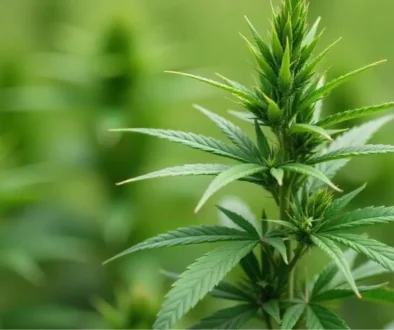The Cannabis Cultivation Tax in California: Breaking It Down
Authors: Simon Menkes, Rachel Wright, and Abraham Finberg (Licensed CPA’s in California)
___________________________________________________
When licensed California cannabis cultivators harvest their product, they will pass along the cultivation to tax to a distributor. This tax will eventually be remitted to the California Department of Tax and Fee Administration (CDTFA) by a licensed distributor- sometimes by way of a manufacturer and then to a distributor or through multiple distributors.
A summary of the cultivation tax rates through 2021 are as follows:
Flower – $9.65 per dry-weigh ounce
Leaves- $2.87 per dry-weight ounce
Fresh Plant- $1.35 per ounce
The CDTFA Cannabis Tax Guide is updated with new rates as they become effective and can be found here:
Here are some of the Tax Guide terms defined and clarified for operators within the industry and for their advisors.
Entering the commercial market: When the product is ready for sale and has gone through all required quality assurance and testing prior to packaging for the retailer. This means you’ll owe the tax when your product can legally be sold, not when you actually sell the product.
Cultivator: At first glance, you’re probably wondering why you need a definition, it’s the person who grows cannabis! Here’s the thing: as far as regulation is concerned, cultivation also includes, drying, curing, grading or trimming as well as planting, growing or harvesting the plant.
What if you’re in the business of supplying trimmers for cultivators, or more likely, you’re a self-employed trimmer? Would you also need a cultivation license? Luckily, no.
Cannabis: Within the regulation, cannabis means buds when using the term flowers and things like trim, used in edibles or extraction, when using the term leaves.
Here’s an interesting nuance to this regulation: immature cannabis plants (clones) and seeds are NOT subject to the cultivation tax.
Ounce: The cultivation tax is not rounded to the nearest ounce. If you sell 40 grams to a distributor, it will be 1.41096 ounces with $13.62 in tax (40 x 0.035274 = 1.41096 oz. x $9.65 = $13.62). It’s best to be precise and to break down into grams in your weights. When you’re selling hundreds or even thousands of pounds per month, calculating precisely can significantly lower the cannabis tax balance due.
Whole Dry Cannabis Plant: There is no cultivation tax category for whole dry cannabis plant. If you sell or transfer cannabis as a whole dried cannabis plant to a distributor or manufacturer, you must use the cannabis flower category and rate for the whole dried plant. Another option is to weigh the plant within two hours of harvesting and use the fresh plant rate, currently $1.35 per ounce.
Distributor or Manufacturer: In an interesting twist to the regulation, similar to the 15% excise tax, the distributor must collect the cultivation tax from the cultivator and pay it to the state, rather than the cultivator pay the state directly.
You may also see our article here on a breakdown of the regulations, collections and remittance of the cannabis cultivation tax.
420CPA “The Mechanics of the Cannabis Cultivation Tax in California”
So, what happens if you sell your trim or flower to a manufacturer? You will pass on the cultivation tax to the manufacturer and the manufacturer will in turn pass it on to their distributor. Then the distributor of the manufacturer will finally remit the cultivation tax to the State.
As you can see the, chain of custody of the cannabis tax follows the cultivator to the distributor who ultimately performs the quality assurance and review testing as required in the Medicinal and Adult-Use Cannabis Regulation and Safety Act.
Receipt: The distributor or manufacturer will need to give each party along the chain of custody proof of the following:
a. The distributor or manufacturer’s name, as the licensee receiving the product.
b. The seller’s own name.
c. The associated unique identifier for the cannabis.
d. The amount of cultivation tax.
e. The weight and category of the cannabis. The weight and category on the invoice or receipt shall be equal to the weight and category recorded in the California Cannabis Track-and-Trace system. (Even if the weight of the product changes due to processing, the weight on the invoice, and the amount of tax passed down the chain, does not change.)
f. The date of sale or transfer.
This will be the only proof you have that you responsibly paid your tax in case the distributor doesn’t pay the taxes to the state. As many of us know, unlicensed distributors and “burner distributors” are rampant. Protect yourself by obtaining this proof, and keep it stored in a safe place. It’s best to keep the documents electronically and backed up appropriately.
Removal from Premises: All cannabis removed from your premises, except for plant waste, is presumed to be sold and is subject to the cultivation tax. If you have a legitimate reason for removing cannabis from your location, such as fire, disease or fungus, or off-site processing by a cultivator, make sure to maintain evidence rebutting the state’s assumption that you sold it illicitly.
Tax matters can be complex and often difficult to navigate. Contact us for any assistance. 420CPA is your strategic financial advisor, serving you since 2009.
Disclaimer: This article has been prepared and published for informational purposes only and is not offered, nor should be construed, as legal advice.





